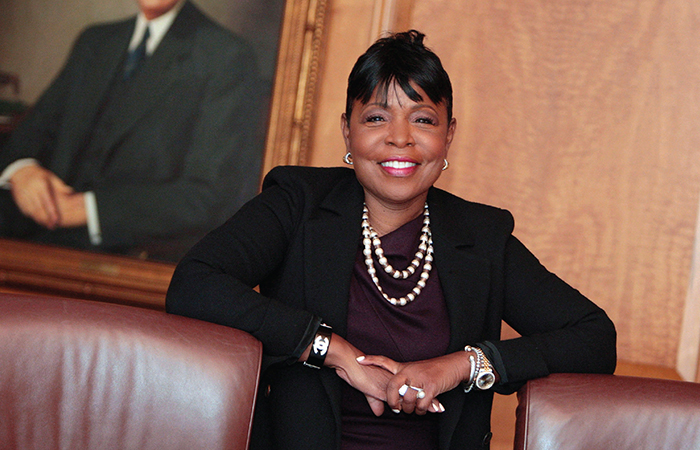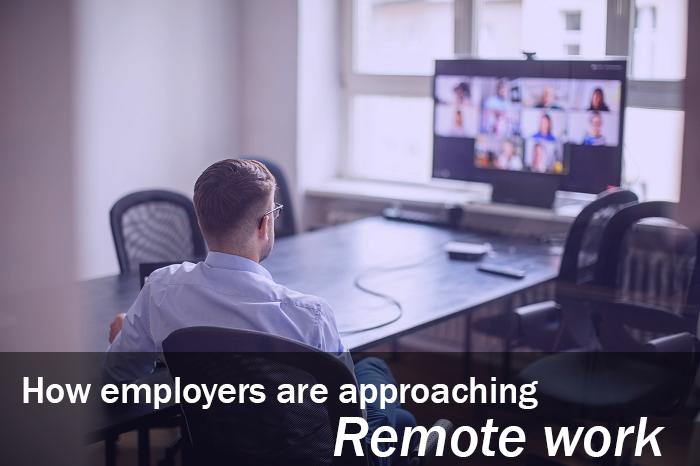At the start of 2020, when it looked like it would be just another normal year, HR executives at Nationwide–the Columbus, Ohio-based insurance giant–were looking at how to address increasing employee interest in remote working and how they could sell top company managers on the concept.
“We now have more millennials in the workplace, and we were finding, with our new associates, that they wanted much more flexibility,” says Gale King, executive vice president and chief administrative officer for Nationwide. Those early conversations meant that, when the coronavirus struck in March and shut down most workplaces, Nationwide was ready to quickly make a big move. Says King: “We seized the moment.”

In late April, or less than two months into the global pandemic, Nationwide announced a new work-from-home strategy that would involve closing at least five U.S. office locations and focusing on four main facilities where thousands of so-called “hybrid” employees would report occasionally but not every day.
King said rethinking the workplace at Nationwide–where at least 30% of employees are expected to mostly work from home even after the pandemic–also will mean radical changes in what its offices in Columbus, San Antonio, Scottsdale, Ariz., and Des Moines will look like once more workers begin trickling back. She said that would include “hoteling”–meaning temporary workspaces, as opposed to assigned offices or cubicles–as well as more spaced-out work areas to promote distancing.
“What do we need to do to ensure they have a safe space,” she says, “if COVID returns?”
The notion of “the future of the office” is continually evolving, but, arguably, there has never been such a dramatic, 180-degree turn in thinking as the one that occurred in spring 2020, when most white-collar workplaces shut down in favor of working from home to stop the spread of the coronavirus. The buzzword for much of the late 2010s had been the “open office,” where workers shunned solitary offices and cubicles for sleek, modern warehouse-style structures–sometimes with no assigned work-station–so that employees would collaborate and innovate through close and impromptu face-to-face contact, in meeting nooks or even at foosball tables.
Now, with the COVID-19 crisis still lingering as the calendar gets ready to flip to 2021, harried HR managers are rethinking and sometimes completely redesigning offices with the emphasis not on how to throw workers together but rather how to keep them apart at safe distances. The new workplace paradigm includes short-term measures around the pandemic–stations for taking temperatures or stockpiling masks and other protective equipment–as well as plans for once-out-of-favor partitioned work stations, staggered shifts, using offices only for team meetings as part of a “hybrid” schedule or reinventing unused space for daycare or other unconventional uses.
See also: Returning to the workplace: opportunities, pitfalls for employers
Arguably, no company epitomizes the rapid U-turn for the modern office than REI, or Recreational Equipment, Inc. In 2016, the suburban Seattle-area firm announced its new state-of-the-art, 8-acre headquarters complex would be environmentally sustainable and collaboration-friendly, with features including a campfire pit and blueberry bogs. But this summer, REI put the new complex up for sale before workers ever set foot there, in favor of working from home and small satellite locations. “Our model for the future of the company,” REI Chief Customer Officer Ben Steele told the website SNEWS, “is going to center on maximizing flexibility, allowing people to work the way they want.”
Learn about new tech options to support remote and hybrid environments at the 2020 virtual HR Tech Conference. Click HERE for more info.

Even though this conversation was sparked by the grim news of the coronavirus, some HR executives and other thought leaders are intrigued, even excited, over the opportunities to rethink the future of the office.
“This is an opportunity to reimagine the physical workplace,” says Janet Pogue McLaurin, the global workplace practice leader at Gensler, the design and architecture firm headquartered in San Francisco. By that, McLaurin means both highly practical changes–such as better indoor air systems to minimize the spread of germs–but also more smartly designed meeting spaces that can bring people together while reflecting post-COVID realities. She imagines “a human-centric experience to build community, to reinforce a shared culture and purpose, to strengthen relationships and to promote employee health and wellbeing.”



